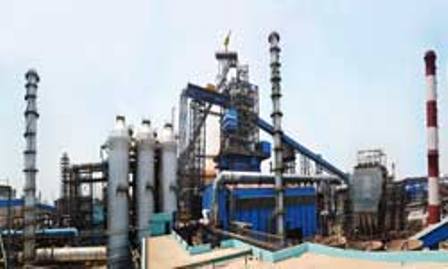Logistics Issues Affect Domestic Steel Production As Raw Material Transport From Odisha Languishes

New Delhi: Based on the National Steel Policy 2017 vision, India hopes to raise the current steel production capacity of 150 MT to 300 MT per annum in the next decade.
To achieve that level, 500 MT of iron ore will have to be transported to the steel plants, of which 60% or 300 million tonnes of iron ore will be produced and dispatched from Odisha alone.
But there is a logistical problem.
The Indian Steel Association (ISA) recently wrote to the Ministry of Railways, bringing to its notice logistics issues faced by domestic steel players.
ISA has cited data of rakes in the eastern region from November 2022 to January 2023, showing a downward trend in rake maturity level for domestic iron ore users for steel plants against a significant hike for f iron ore and pellet exporters.
ISA stated that while indent maturity level of rakes for domestic iron ore users for steel plants dropped from 60% in November to 48%, maturity level of rakes for export of iron ore and pellets increased from 57% to 74% in the same period.
The system of rake allocation seems to be tilted in favour of diversion of iron ore for export purposes, thus neglecting the interest of domestic steel players, which is against the philosophy of Atmanirbhar Bharat.
The new iron ore policy which governs allocation of rakes says that Railways needs to strengthen and streamline a full-fledged rake allotment system (RAS) with complete coverage of all iron ore loading locations integrated with software modules of mines department of respective state governments. But this is far from what is being followed.
Production of steel has been hit due to shortage of railway rakes for iron ore transport, which needs to be corrected immediately.
Presently, Odisha can transport around 140 MT annually — 100 MT through Railways and close to 40 MT through roads. So if Odisha has to double its iron ore output, Railways will have to take the onus as road movement has its limitations.
Lack of railway sidings and rake availability mean that roads are overburdened. This leads to massive logistical issues as road network in the region is under great pressure due to heavy-loaded vehicles plying continuously.
Of the 140 functional iron ore mines in Odisha, Keonjhar (31% of mining area in state) and Sundargarh (20% of mining area in state) districts account for more than half. The Joda region has 15 captive and 29 non-captive iron ore mines and with the inclusion of new sector Nayagarh/Malangtoli, the number will rise.
Railways is the preferred mode of transportation for companies due to cost competitiveness and seamless transport of the ore to desired destinations. That’s why Railways must give priority to domestic steel producers for smooth raw material movement.
Such a shift will boost not only overall economic development and long-term growth of Odisha, but the nation at large.

Comments are closed.